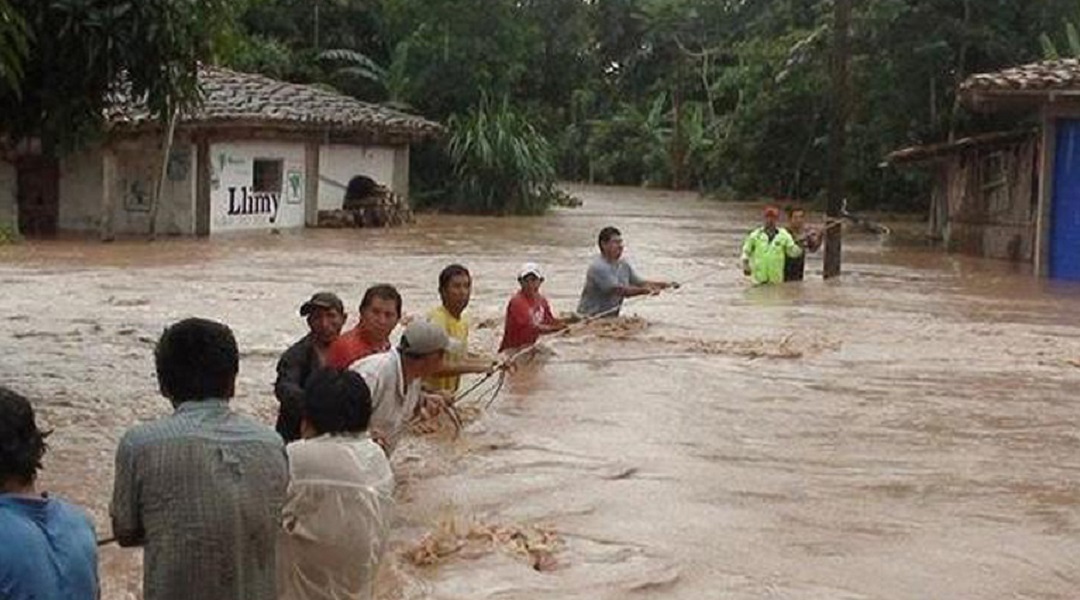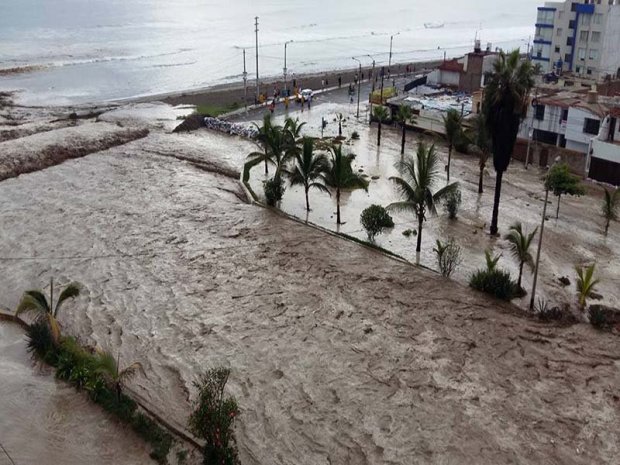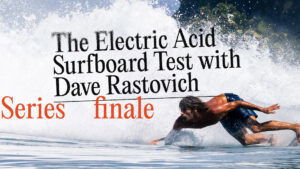El Niño Destroys The Birthplace of Surfing
Not that El Niño…and not that birthplace.
We’ve heard so much about El Niño we’re desensitised to it. And we’ve heard so much about Hawaii being the birthplace of surf it’s cliché. Here’s a spin that turns the narrative upside down.
Currently the west coast of South America is being hammered by a weather phenomenon known as El Niño Costero…not to be confused with the El Niño Southern Oscillation (ENSO), which produced the memorable conditions of 2015/16.
“The Coastal Child” is an atypical warming of the Pacific Ocean off the coasts of Peru and Ecuador. At present, some areas are recording temps 6 °C to 8 °C above average water temps. The warm water has triggered heavy rains, which in turn has induced severe flooding and mudslides. To date, El Niño Costero has caused 78 deaths with over 100,000 victims currently affected in Peru. Another 14 people have died in Ecuador.
“The Trujillo area, including Huanchaco, is affected in two different ways, first when it rains in the area just behind Trujillo, it creates the now infamous huaico–landslide, water with mud,” explains Carlos Antonio Ferrer, who’s spearheading other relief efforts. “Because we don’t have a drainage system at all, not even walls to protect us from over flooded riverbeds, the water carried by the huaico gush is dragging down whatever is in its way, creating havoc throughout Trujillo.”

Not much to benefit from this El Niño event, just destruction, deaths and devastation.
Access to clean water, food and building materials is reportedly the most pressing need in the hardest hit areas. Volunteers from Otra Cosa Network, Milagro School, Skip in El Porvenir and others in Huanchaco are reportedly “working together shoulder to shoulder to get back with their normal lives. Waves for Water has also announced that they are in the early stages of putting a relief plan into place.
“We are currently mobilising relief effort through our Clean Water Corps program—which gives US Veterans the opportunity to leverage their skills and experience against a humanitarian crisis,” reads a Facebook post from the organisation. “Our thoughts are with the people of Peru.”
Thankfully in the last few days the rains have decreased and conditions have improved.
“The Peruvian First Minister, Fernando Zavala, speaking from the Centro de Operaciones de Emergencia Nacional, held a press conference along with several ministers and he shared some good news,” continues Ferrer. “The sea surface water of the ocean has decreased 1°C—not a lot but going in the right direction. The winds have become more active, which in turn will cool off the ocean waters. In most cases, torrential rainfalls have been downgraded to moderate rainfalls. Nonetheless there will be areas that will have heavy rainfall, especially in Tumbes and Piura regions. Trujillo and Huanchaco have been mostly dry since Sunday and the riverbed is dry again.”
After the skies cleared, people have started coming together to clean the roads and streets in Huanchaco. Ramón Castro, President of Huanchaco World Surfing Reserve, pulled out some of his company’s heavy machinery to help remove mud and debris from Huanchaco´s oceanfront and nearby streets. Power and water have been restored, while phone and Internet communications are slowly improving.
The wave-rich area of Trujillo has been especially hard hit (home of the famed left point, Chicama). The beach resort community of Huanchaco—where pre-Incan fisherman first started riding their caballito de totora 5,000 years ago—is in shambles. In 2013, it was named a World Surfing Reserve; today, it’s awash with mud and debris.

Out to sea.
In recent years, there’s been a movement to establish Peru as the actual birthplace of wave-riding, in the same Huanchaco region currently suffering. The thesis is as follows: according to archaeological records, ancient Peruvian fishermen in the Huanchaco area began using boats made out of reeds to paddle out beyond the surf to cast their nets (kind of like an old-school SUP). Being true men of the sea, the fishermen began racing their crafts towards shore and eventually it evolved into a test of skill. Pottery and other archaeological evidence indicate this practice began around approximately 3,000 B.C. (5,000 years ago).
By comparison, it’s believed Polynesia was first settled by humans in Samoa around 800 B.C., which would have been over 2,000 years after the pre-Inca civilisation were hanging heals. There’s an argument that can be made that descendants of these ocean-goers sailed from the South American mainland to Rapa Nui (Easter Island). The famous voyage of the Kon Tiki in 1947 supports the claim that a raft made of indigenous materials can successfully ride the currents to Polynesia. And once these ancient mariners penetrated Rapa Nui, it’s not hard to envision the concept of riding waves being introduced to Tahiti and Hawaii.
This theory is being spelt out in a soon-to-be published book by the editors of Olas Peru called “5,000 Years Riding Waves: The Peruvian Surfing History.” If the hypothesis holds water, it could be a seismic shift on how the history of surfing is told and understood.
“Peru has a very resilient people and we will be a much stronger society once the dust is settled,” concludes Ferrer.















Comments
Comments are a Stab Premium feature. Gotta join to talk shop.
Already a member? Sign In
Want to join? Sign Up